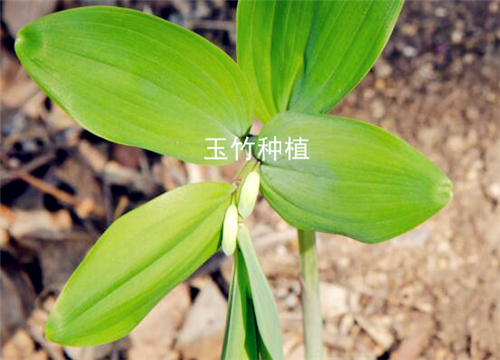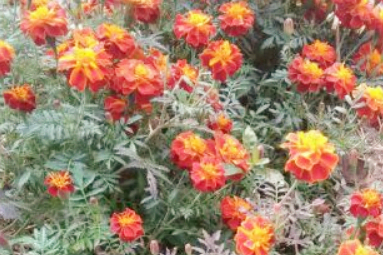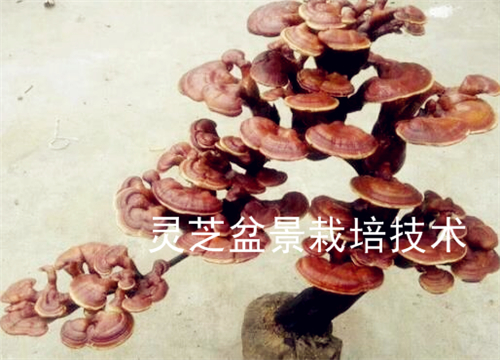When is the best time to plant Polygonatum odoratum? Master 6 planting points and yield 10,000 jin per mu!
The name Polygonatum odoratum was related to bamboo, but it really had nothing to do with bamboo. It was just a little similar to bamboo leaves. It was a kind of traditional Chinese medicine that had the effect of lowering the three highs. Traditional Chinese medicine stores sell dried finished products, the price is generally around 30 yuan a catty, many farmers see the middle of the interest, began to plant Polygonatum odoratum, but because of the first planting, no experience, do not know when to plant Polygonatum odoratum best? What are the main points of planting technology? For everyone, organize as follows:

When is the best time to plant?
We all know that vegetables and crops are generally planted in spring and autumn, and rarely planted in summer and winter. The same is true for Polygonatum odoratum. Generally, farmers will choose to plant in autumn and spring, but in some places, if it is cold, the planting time will also be postponed. The details are as follows:
1. When is the best time to plant in spring? The best sowing time of Polygonatum odoratum in spring is from March to April, but this planting time point is suitable for planting in Hunan, Hubei, Jiangxi, Anhui and other places, but not suitable for planting in Heilongjiang, Jilin and Liaoning in Northeast China. In general, the northeast region should wait until the temperature rises to more than 5 degrees in spring, preferably in mid-April when the seeds are best.
2. When is the best time to plant in autumn? The best time to sow Polygonatum odoratum in autumn is from August to October. There is no need to distinguish different regions in these months, because the temperature difference will not be very large.
These are the best months to plant polygonatum odoratum, for those who want to know the planting time of polygonatum odoratum will be helpful.
Second, Polygonatum odoratum planting technology: master 6 planting points per mu yield of 10,000 jin benefit!
Since it is the first time to plant Polygonatum odoratum, you must not understand the high-yield planting technology. In order to achieve high-yield benefits, you must master the following points:
1. variety selection
The varieties planted in different areas will be different. Some areas want to buy drought-resistant varieties due to perennial drought, while some areas want to buy cold-resistant varieties due to cold weather. There are the following varieties for everyone to choose from.
(1) Polygonatum odoratum, suitable for planting in Hunan Province, Shaoyang, Shaodong and Hengyang.
(2) Haimen Polygonatum odoratum, suitable for planting in Jiangsu Province, Haimen, Nantong.
(3) Western Polygonatum odoratum, suitable for planting in Guangdong Province, mainly produced in Lianxian County.
(4) Eastern Polygonatum odoratum, suitable for planting in Zhejiang Province, Xinchang and other places.
(5) Polygonatum odoratum, suitable for planting in Northeast China and Inner Mongolia.
(6) Polygonatum odoratum in Jiangbei, suitable for planting in Jiangsu, Anhui and other places.
2. Soil selection, preparation
Experienced farmers tell us that sand is the best choice for planting polygonatum odoratum, because it is conducive to the growth of polygonatum odoratum later. When selecting land, it is generally selected that the land is cultivated frequently, because it cannot be continuously cultivated, and continuous cropping will lead to reduced yield. Before planting, the soil must be relaxed to more than 30. One mu of land needs 4000 of base fertilizer, among which the application of farm manure is the best. Then in the preparation of the ground must be level, from a good ditch, convenient later drainage.
3. planting method
It is best to choose a sunny or cloudy day when planting, row spacing control in 30 cm can plant a tree, after planting, with farm cow dung fertilizer gently covered, and then covered with a layer of fine soil on the line, this time can be appropriate to pour a little water, but do not pour too much, generally wait 15 days after watering when pouring enough.
4. density control
Because it is the first time to plant Polygonatum odoratum, there is no experience. In order to plant more in the field, we should plant it very densely. What we need to know is that the permeability of the field will become poor if it is too dense. It will be easy to get sick. If it rains, it will rot. Therefore, the density should be controlled at about 40 cm. In this way, it can produce high yield.
5. fertilizer and water management
Before planting, tell everyone to apply enough base fertilizer. Generally, you don't need to apply topdressing in the first year. However, if you find that the growth is not very good or even the leaves are yellow, it means that your previous base fertilizer is insufficient and you need topdressing to supplement nutrients. Generally, you will choose compound fertilizer to apply topdressing. If the first year does not appear in the above situation, then you can apply fertilizer once in the spring of the second year. Polygonatum odoratum is more like wet, so daily nothing to water it, especially when it is dry must water, encounter rain season to pay attention to drainage, otherwise it will be easy to root rot.
6. pest control
Planting polygonatum odoratum can not escape the prevention and control of diseases and insect pests. Common diseases are root rot, leaf spot disease and gray spot disease. The main reason for the occurrence of these three diseases is too wet or insufficient water. Therefore, we must pay attention to moving more in the field. Generally, Bordeaux mixture can be cured. The common pest of Polygonatum odoratum is white grubs, which will hurt the tubers of Polygonatum odoratum. At this time, trichlorfon must be used to control it, otherwise it will affect the yield.
The above are the 6 key points of polygonatum planting technology, hurry to collect it!
Summary: The above content is some knowledge points that need to be paid attention to when planting Polygonatum odoratum. If you master it well, it is not a problem to harvest 10,000 catties per mu after three years. This article is synthesized in the polygonatum planting professional households.
Time: 2019-03-13 Click:
- Prev

Introduction of planting methods and matters needing attention of peacock grass (small marigold)!
Malachite grass, also known as small marigold, red yellow grass, etc., is an annual herb of the genus Asteraceae. Because of its bright petals, high ornamental value, strong adaptability and easy feeding, it is very popular.
- Next

Explain the main points of daily Ganoderma lucidum bonsai cultivation techniques in detail!
Many people think that Ganoderma lucidum cultivation is either cultivated by growers or wild, but bonsai cultivation of Ganoderma lucidum is very popular in recent years. Many people will choose a good-looking bonsai, and then choose the variety they want to cultivate, put it at home, and watch it.
Related
- Fuxing push coffee new agricultural production and marketing class: lack of small-scale processing plants
- Jujube rice field leisure farm deep ploughing Yilan for five years to create a space for organic food and play
- Nongyu Farm-A trial of organic papaya for brave women with advanced technology
- Four points for attention in the prevention and control of diseases and insect pests of edible fungi
- How to add nutrient solution to Edible Fungi
- Is there any good way to control edible fungus mites?
- Open Inoculation Technology of Edible Fungi
- Is there any clever way to use fertilizer for edible fungus in winter?
- What agents are used to kill the pathogens of edible fungi in the mushroom shed?
- Rapid drying of Edible Fungi

